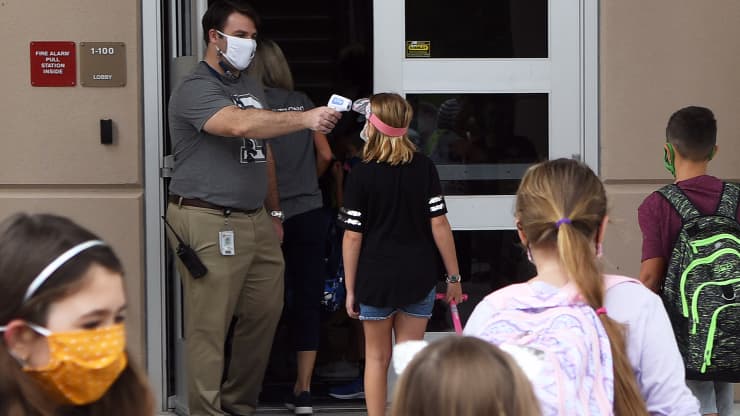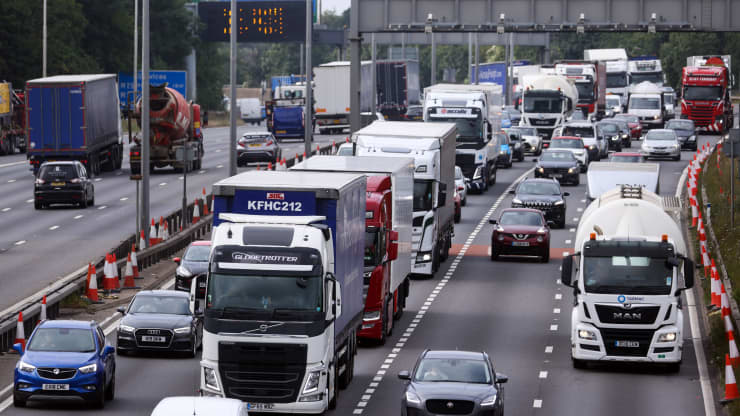LONDON — The Covid-19 pandemic is not only having a seismic impact on global public health but also causing chaos for the economy, with supply chain disruptions and labor shortages a big problem for businesses around the world

Shifts that have taken place in the labor market are becoming more pronounced, with many people voluntarily quitting roles just as demand for workers rises as economies reopen.
Economists say changing demographics like aging and retiring workers are a factor behind the shortages, as well as border controls and immigration limits, and demands for better pay and flexible working arrangements.
The latest labor data from the U.S., for example, shows that more workers are willing to walk away from their jobs or to switch employment.
The most recent U.S. Labor Department’s monthly Job Openings and Labor Turnover Survey, released last week, showed there were 10.4 million job openings in August whereas the number of people leaving their jobs (the so-called “quits rate”) rose to 4.3 million, the highest level is seen on records dating back to Dec. 2000.
Sectors particularly affected by workers quitting their jobs were accommodation and food services, wholesale trade, and state and local government education.
The problem is not just a U.S. one, with many countries around the world experiencing a shortage of workers. It matters because it’s exacerbating supply chain disruptions around the globe, with key industries struggling to regain momentum due to a lack of workers or raw materials.
This disrupts both local and global production and supply networks, hampering economic growth and causing product and service shortages for consumers.
Experts are assessing the potential impact that the worker shortages could have on economies in the U.S., U.K., and eurozone. They also stress that while the pandemic has accentuated and underscored labor shortages, the roots to these problems are pre-pandemic.
“The lack of skilled workers is not only just another symptom of post-lockdown economics but also the result of more fundamental developments in the U.S., the eurozone and the U.K.,” ING economists Carsten Brzeski, James Knightley, Bert Colijn, and James Smith wrote Tuesday in a note.
What’s going on with U.S. workers?
Looking at the cyclical and more fundamental drivers of those shortages, ING’s economists examined similarities and differences in labor markets across the globe.
In the U.S., they noted that the economy has fully regained all of the lost economic output brought about by the pandemic although “employment remains 5 million [jobs] below February 2020′s level.” This isn’t due to a lack of worker demand, however.
“There are more than ten million job vacancies right now spread across all sectors with a record proportion of companies raising pay to try to attract staff. Instead, it is a problem with the supply of workers, which is both holding back output and increasing inflation pressures in the economy.”
One possible explanation for this is that households have built up savings buffers and don’t have any urgency to return to work, the economists note, but the problem could be more structural than that.
“We believe there is a more permanent loss of workers driven by a large number of older workers taking early retirement. The thought of returning to the office and the daily commute may seem unpalatable for many people and with surging equity markets having boosted 401k pension plans, early retirement may seem a very attractive option,” they noted, adding that border closures will have curbed immigration and slower birth rates mean fewer young workers are now entering the workforce.

Paul Hennessy | Nur Photo via Getty Images
“If correct, labor market shortages could persist for a good deal longer than the Federal Reserve expects, which will mean companies increasingly bidding up pay to attract staff,” ING said.
“Not only that, but elevated quit rates suggest that companies may also have to raise pay to retain the staff they currently have given the high costs of worker turnover on morale, training, and customer satisfaction. This points to more inflation pressures for the Fed to respond to with interest rates rising sooner and faster than currently priced by financial markets.”
What about the U.K.?
The U.K.’s situation has also been exacerbated by Brexit, with many foreign workers that the country relied on going back home during the pandemic.
The absence of workers in critical industries such as meat production, agriculture, and transportation has led to consumer panic in the U.K. in recent weeks, with shortages of fuel at gas stations and warnings that thousands of livestock could be culled.
That has led the government to introduce temporary visas for truck drivers and poultry workers and reports of wage increases to attract workers to key industries like hospitality. In the meantime, there are widespread concerns over the rising costs of goods, services, and food ahead of Christmas.

Post-Brexit visa rules make it trickier for EU nationals to work in the U.K. in lower-paid roles and ING said this means it will be permanently harder for U.K. companies to source staff from overseas. “Recent temporary visa changes for specific roles, including lorry [truck] drivers, are unlikely to make a huge difference to that story,” they noted.
Like Europe, there are structural challenges facing the U.K. too, namely that working-age population growth is set to slow over the next decade. ING noted that “like the U.S. that may amplify some of the current shortages, but it’s also a structural drag on U.K. potential growth.”
US Dismisses Taliban Claims About Chinese Investment in Afghanistan
And the eurozone?
Similar to the U.K., the neighboring eurozone sought to limit massive job losses in the pandemic by introducing furlough schemes (where the government-subsidized workers’ earnings in order to stop redundancies).
“At 7.5%, the unemployment rate is now just 0.4 percentage points away from its all-time low, reached in March last year,” ING noted.
Still, while concerns about labor shortages have started later than in the U.S. and are less pressing than in the U.K., “they are increasingly mentioned as a concern for businesses,” ING added.
“More than ever, businesses in industry report labor as a factor limiting production, in services this number is still below historical highs.”

Napomena o autorskim pravima: Dozvoljeno preuzimanje sadržaja isključivo uz navođenje linka prema stranici našeg portala sa koje je sadržaj preuzet. Stavovi izraženi u ovom tekstu autorovi su i ne odražavaju nužno uredničku politiku The Balkantimes Press.
Copyright Notice: It is allowed to download the content only by providing a link to the page of our portal from which the content was downloaded. The views expressed in this text are those of the authors and do not necessarily reflect the editorial policies of The Balkantimes Press.
